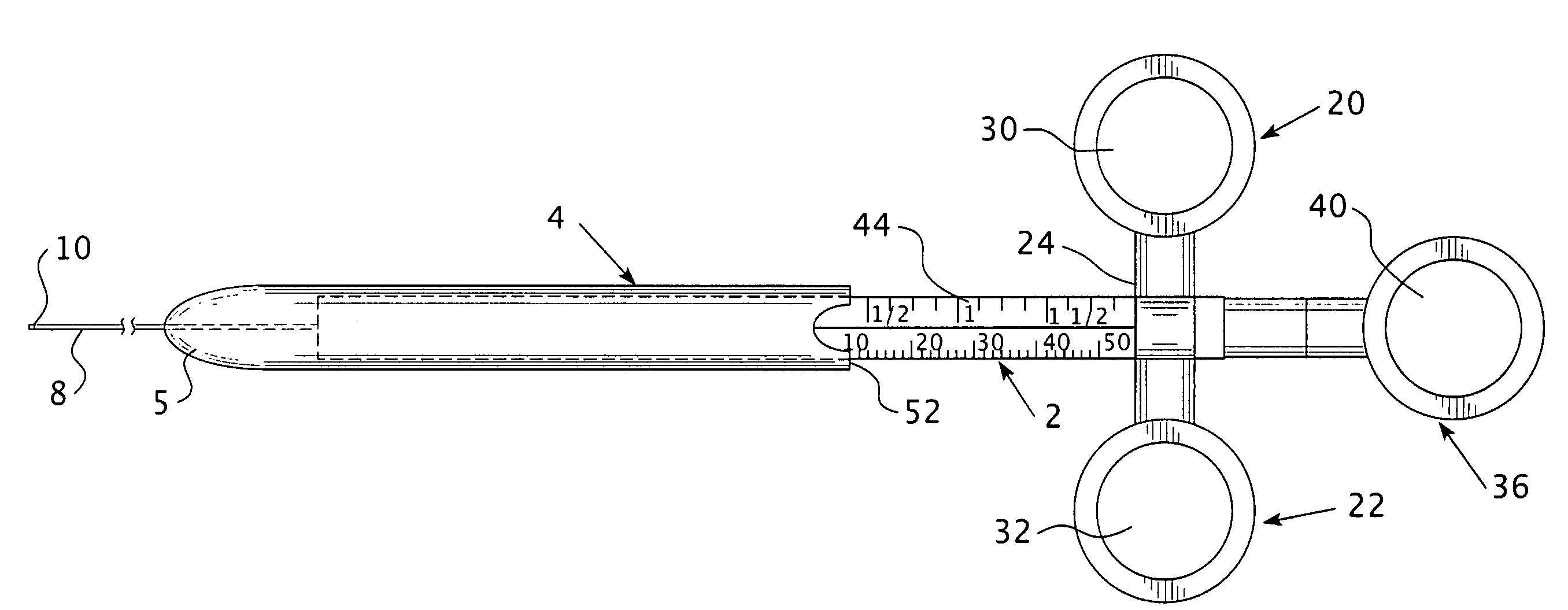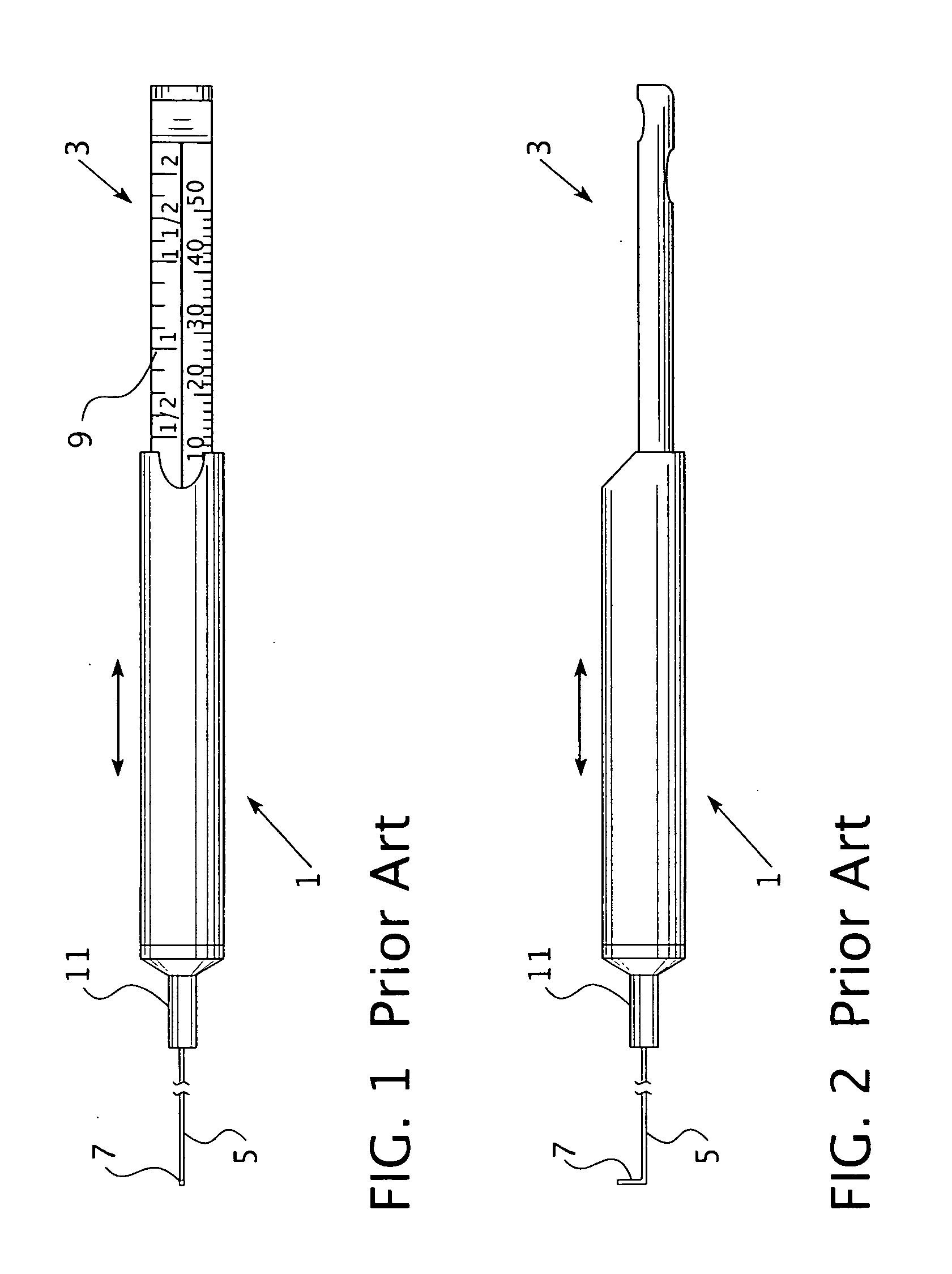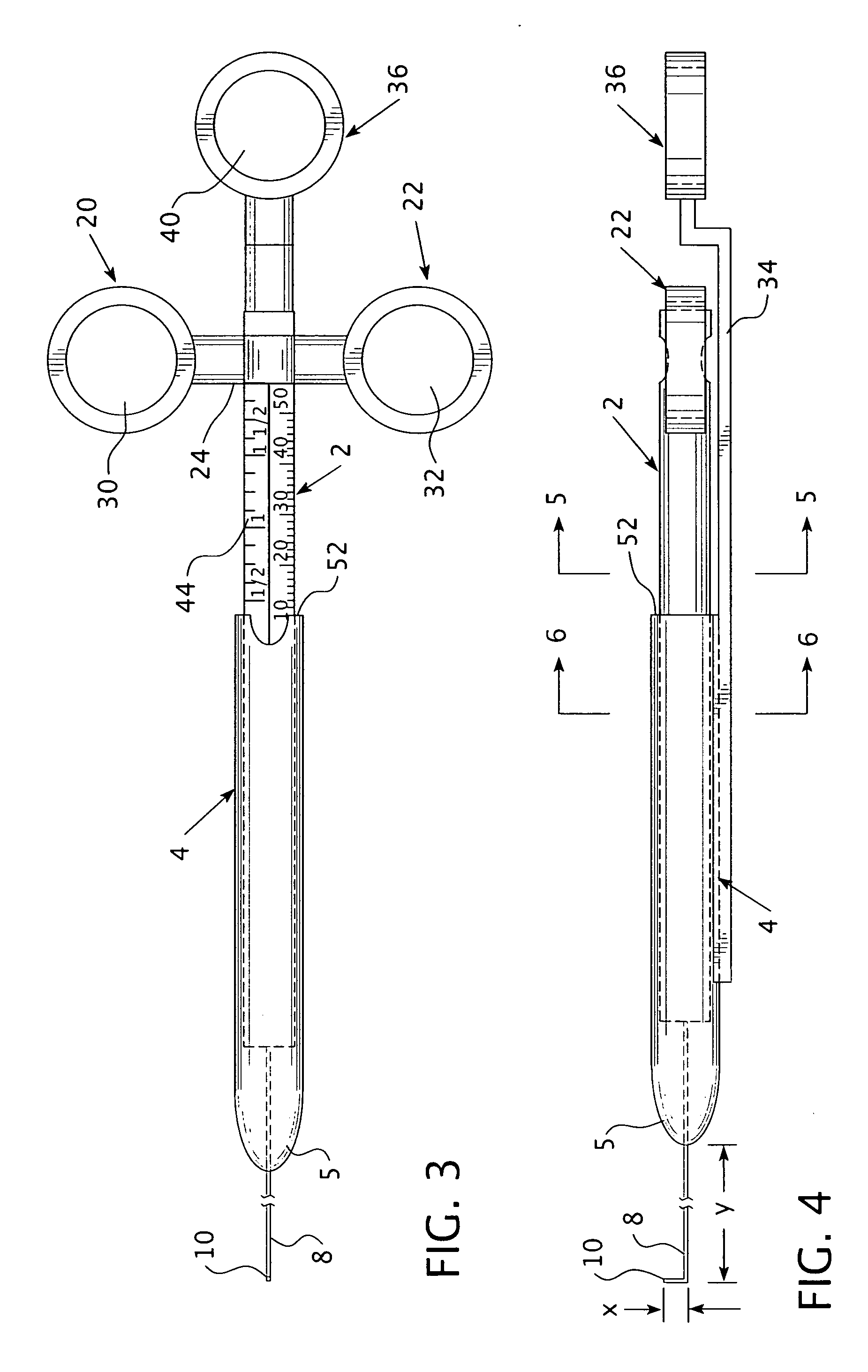There are a number of recognized surgical complications which have occurred from screws which are too short leading to insufficient fixation and “pulling out” of the fixation hardware and loss of position of repaired bones.
In other cases, screws which are too long have resulted in damage to normal structures, such as tendons, which have ruptured as a result of wear against screw ends protruding through bones.
In general, bicortical placement results in a stronger purchase of the screw in the bone, but situations exist where only unicortical placement is possible or, in some cases, desirable.
These countersunk holes also decrease the prominence of the
screw head above the plate.
The presence of blood and tissue fragments may interfere with motion of parts which might be more easily mobile in a less harsh environment.
The constraints of
anatomy and surgical
exposure may limit the ability to position or manipulate the gauge.
Most prior art designs, while useable, suffer significantly in terms of their maneuverability.
While this overall concept is simple and straightforward, the actual manipulation is often difficult.
In practice, there are several difficulties with manipulation as described and as the gauge is designed to be operated.
Inserting the probe portion can sometimes be difficult if bone fragments or other tissues block part or all of the hole.
During the phase in which the probe is being “hooked,” the balance of forces to hold pressure on the sidewalls of the hole and slight withdrawal tension on the “hook” can be somewhat difficult to maintain with the type of grasp which must be used.
Once the probe is positioned and “hooked” as described hereinbefore, maintaining the position of the hook with the grasping technique noted is of limited security because of the nature of holding a narrow, elongated structure in such manner.
Such grasp of the depth gauge is not possible except during
insertion of the probe, as the outer
barrel portion ultimately needs to be free to slide over the inner, probe portion.
Other factors also contribute to difficulty in maintaining the position of the “probe / hook.” The grasp of the “hook” is somewhat tentative due to the relatively small size of the “hook.” The edge of the bone hole which is being hooked may be slightly rounded as well due to the nature of bone substance.
For one-handed use, it is biomechanically difficult to maintain a grasp on the proximal end portion of the probe, keeping lateral pressure of the end of the probe against the walls of the hole and proximal directed force (away from the hole) on the probe to keep the “hook”“set,” and then, with the same hand, direct movement of the
thumb or
thumb /
index finger toward the hole to advance the outer
barrel.
The competing forces of pushing toward the hole with part of the hand and pulling away from the hole with another part of the hand is difficult with the configuration of the usual gauges.
This necessitates resetting the “hook,” or if not recognized, results in overestimating the length of the required screw.
The force needed to hold the probe against the side walls of the hole to keep the probe “hooked” also can cause bending of the probe and to a small degree the rest of the inner
barrel.
This deformation can make it mechanically more difficult for the outer barrel to slide because of increased friction.
Presence of blood and / or tissue fragments which may adhere to the gauge may also interfere with easy sliding of the outer barrel.
The nature of the contrasting motions needed to maintain the position of the probe and advance the outer barrel when combined with these other factors can make it difficult to use current gauges.
This can be problematic if the other hand is needed to hold the fracture or is otherwise employed in the surgical procedure, such as holding other instruments.
Even with two-handed use, it can sometimes be difficult to balance the forces as the motions of the probe and the outer barrel are still done by
wrist and arm movements, while the fingers are just used to maintain grasp on the parts of the device.
This combination of movements, extending the
thumb, holding the
middle finger and its barrel steady, and extending the
index finger and advancing its barrel, would likely prove quite awkward in practice.
While it is feasible, it is not the optimal utilization of the
mechanics of the hand.
 Login to View More
Login to View More  Login to View More
Login to View More 


